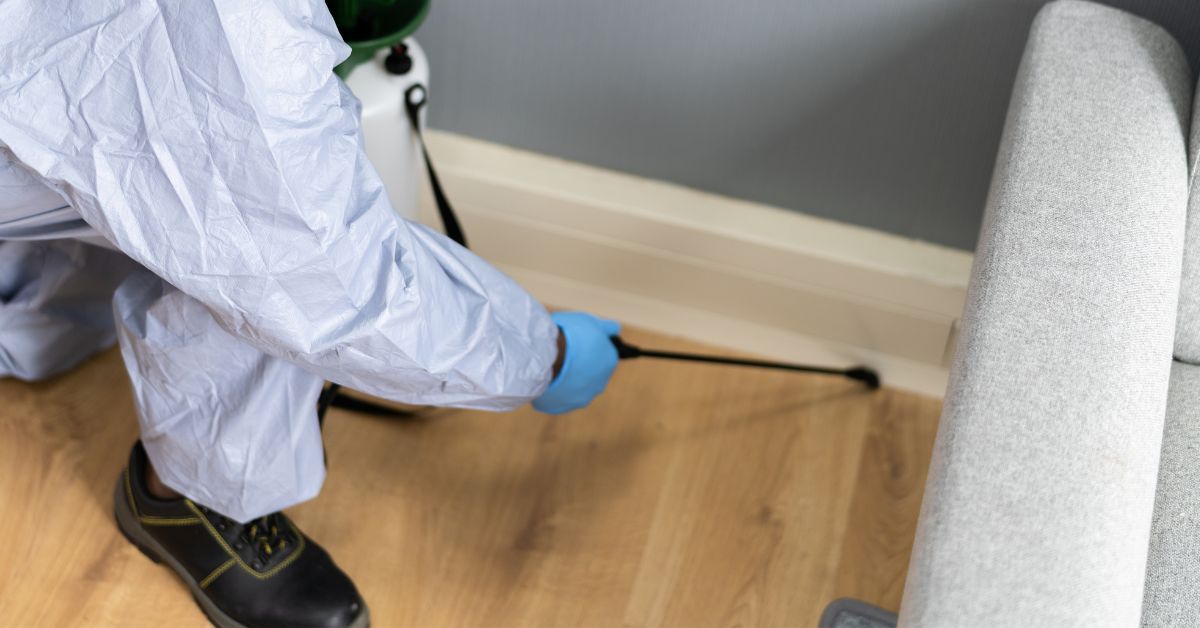Termites are among the most destructive pests, causing billions of dollars in damage to properties worldwide every year. Their ability to go undetected for long periods allows them to wreak havoc on the structural integrity of homes and buildings. Consequently, finding the most effective termite killer is crucial for homeowners and pest control professionals alike. This guide provides an in-depth look at the best termite treatments available, including both chemical and natural solutions.
Top 6 Termite Killers
Most Popular: Taurus SC
Best Bait: Trelona ATBS Bait System
Best Fast-acting Termite Killer: Bifen XTS
Best for DIY Termite Control: Spectre 2 SC
Best For Untreated Wood: Bora-Care
Best Termite Foam for Direct Spray: Termidor Foam
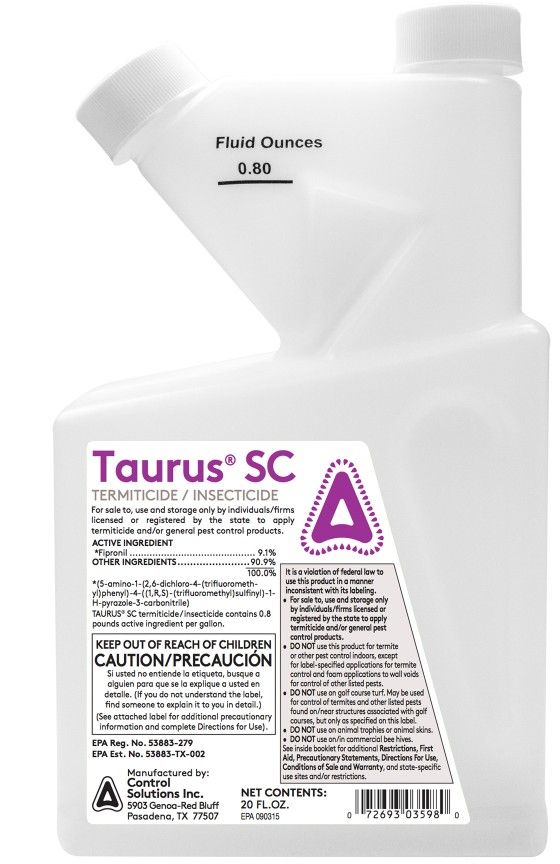
Taurus SC
Most Popular: Taurus SC
Benefits
Works not only on termites but a wide variety of other pests
Frequently used by professional pest control experts
Kills termites thoroughly at the source
Safe for pets - uses the same active ingredient in many dog and cat flea medications.
Drawbacks
Pricier than some of the other termite treatments
Effort-intensive - need to dig to apply it properly
It can only be used outside
Results are not immediate
Termite control in: 90 days or less
Lasts up to: 10 years
Active ingredient: Fipronil
Taurus SC is one of the most effective termite products on the market today. Before you begin using Taurus SC, you will need to dig out a six-inch trench around the perimeter of your home. Once you’ve done this, pour the Taurus SC mixture in every 10 feet.
Taurus SC does not repel termites. Most termites are able to detect repellents and can avoid them. With Taurus SC, termites can’t smell it, so they cross over it and bring the poison back with them into their nest. Although Taurus SC isn’t as fast as some other termite insecticides, it is much more thorough in the destruction of the entire termite nest.
Within a few short weeks, termites will rapidly begin to die, and towards the end of the 90 days, the whole colony will be exterminated.
If you’re dealing with other pests, too, Taurus SC kills roaches, ants, wasps, centipedes, and many other insects. Taurus SC is great for homes with pets because its active ingredient is the same as the ingredient commonly used in pet flea treatments.
Buy Now
The Trelona ATBS Bait System
Best Bait: Trelona ATBS Bait System
Benefits
Attractive food source for termites
Sustained effect from continued consumption
Uses less bait than other termite bait systems
Allows maximum wood-to-soil contact
Drawbacks
Set up time required
Takes longer than some other termiticides
Termite control in: 120 days or less
Lasts up to: 5 years
Active ingredient: Novaluron
Trelona Bait system is a new termite bait station from the same company that produced the well-known Advance Termite Bait Systems.
As the Advance system’s replacement, Trelona uses 0.5% Novaluron as its active ingredient. Its compressed termite bait is extremely attractive as a food source for termites, and they will quickly begin to consume it.
The bait cartridges are made with a purified cellulose-based matrix compressed into individual tablets. What sets this bait apart is how it works to eliminate subterranean termites.
The Novaluron is what’s known as a chitin inhibitor, meaning it disrupts the termites’ molting and egg production processes. Each of these stations allows for long-term, sustained consumption, as well as monitoring capabilities.
Monitor every 120 days to check for the presence of live termites.
Buy Now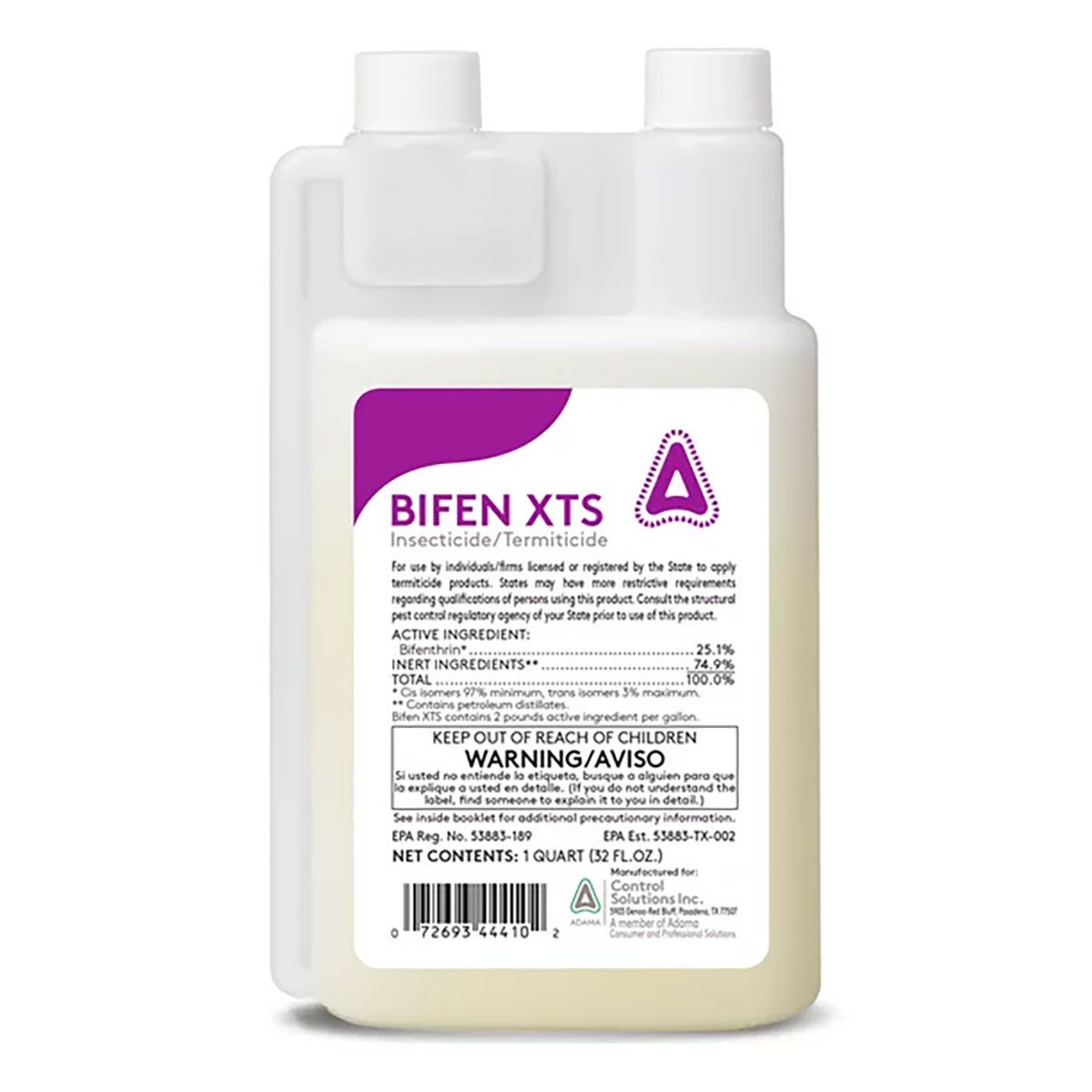
Bifen XTS
Fastest Acting: Bifen XTS
Benefits
Fastest of all termiticides
Eliminates a wide variety of wood-destroying pests
Offers residual effects, which helps prevent future termite problems
Drawbacks
Potent odor
Can be harmful to plants
Termite control in: within 24 hours
Lasts up to: 90 days
Active ingredient: Bifenthrin
Bifen XTS is an oil-based termiticide that is extremely fast-acting. It works in less than 24 hours to attack termites’ nervous systems, making it a very effective termite treatment. When used around the outside or base of your home, it is highly effective. While effective around the perimeter of your home, Bifen XTS cannot be used indoors.
Extra caution should be taken around your garden, as the oil-based insecticide may damage some plant varieties.
For people looking to prevent termites from returning, Bifen XTS is an excellent preventative treatment. The residual insecticide it leaves after you’ve sprayed remains for roughly two months, eliminating all termites that come in contact with it. There are at least several dozen more types of insects that Bifen XTS can effectively control, including carpenter bees and stink bugs.
Buy Now
Spectre 2 SC
Best For DIY: Spectre 2 SC
Benefits
Thorough “Secondary Kill” action, termites pass the poison along to their hive mates
Kills through ingestion and contact
Non-repellent, so it won’t scare termites away
Long-lasting, virtually odorless formulation
Can be used as wall foam, soil drench, or general-use spray
Drawbacks
Works slower than Bifen XTS
Termites do not die immediately
Can only be used inside the house as a crack and crevice treatment
Termite control in: 14 days
Lasts up to: 30 days
Active ingredient: Chlorfenapyr
Spectre 2 SC comes with the unique quality of being able to kill termites and other pests that have not come into direct contact with the treated area. Because of this, Spectre 2 SC Termiticide has a “secondary kill” action.
As one insect comes in contact with others in the nest through touching, grooming, and food exchange, the insecticide is passed along. This indirect kill action is the primary benefit of Spectre 2 SC Termiticide’s exceptional termite population control, even at low doses.
Additionally, Spectre 2 SC kills many other pests through contact and ingests. These include ants and cockroaches.
With the powerful combination of its long-lasting effects in a low dose, excellent control, virtually odorless formulation, and nonrepellency, Spectre 2 SC serves as a superior all-around DIY termiticide solution.
Buy Now
Bora-Care
Best For Untreated Wood: Bora-Care
Benefits
Can be used indoors, outdoors, or for new construction
Simple spray application
Also prevents decay fungi (not mold)
Drawbacks
Effective but may take up to 90 days to kill all termites
Termites must ingest the wood to be affected
Takes up to 30 days before the wood is fully soaked through
Termite control in: 90 days or less
Lasts up to: Life of the wood
Active ingredient: Disodium Octaborate Tetrahydrate
This insecticide is an excellent multirole spray that kills and prevents termites, as well as acts as a strong fungicide. Bora-Care also targets other pests, such as Powderpost Beetles and Carpenter Ants.
Bora-care is specifically formulated to be used on untreated wood, differing from many other soil application termite killers. When sprayed onto untreated wood, Bora-Care seeps deep into cellulose material, such as wood-based material. It’s especially great for preventing damage on new construction.
For the Bora-Care application, spray the bottom two feet worth of studs and framework. You will need a compressed air sprayer, and the product label can help you complete your first application.
Bora-Care is different from another leading wood treatment formulation named Timbor. With Bora-Care, the thick glycol solutions allow for much deeper wood penetration than other borate products like Timbor. One treatment of Bora-Care will last for the life of the wood.
Bora-Care is a non-repellent, using borate salts to damage the bodies of termites, ants, and similar insects. When ingested by termites and other related insects, they become unable to obtain nutritional value from the food they consume, ultimately leading them to starve to death. Because of this starving mechanism, termites cannot develop a resistance.
Buy Now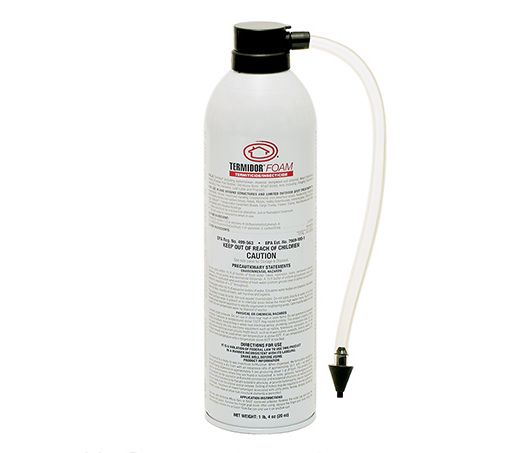
Termidor Foam
Best Termite Foam for Direct Spray: Termidor Foam
Benefits
One application lasts for a month or longer
Usable indoors
One container can be used many times
Easy to apply
Odorless
Drawbacks
Does not protect around the perimeter of your home
Can be less effective than barriers or baits
Termite control in: 90 days or less
Lasts up to: 30-40 days
Active ingredient: Fipronil
If you have termite problems in the cracks and crevices in your home, Termidor Foam gives you a major advantage. Different from baits and liquid barriers, Termidor Foam can be used inside the home. For pesky termites hiding in cracks and crevices, this treatment is a simple solution.
Unlike a typical spray, Termidor Foam releases a massive amount of foam termite control treatment from the can - expanding to around thirty times in volume.
Because of this rapid expansion feature, you can rest assured that it will reach all those hard-to-reach cracks where termites like to hide. The expanding foam will be able to kill termites on contact that you might not even know were hiding there. Unlike BioAdvanced termite killer, Termidor Foam can be used indoors.
On top of its versatility, Termidor Foam is completely odorless, so you won’t need to worry about strong chemical smells while this termiticide does its job.
Buy Now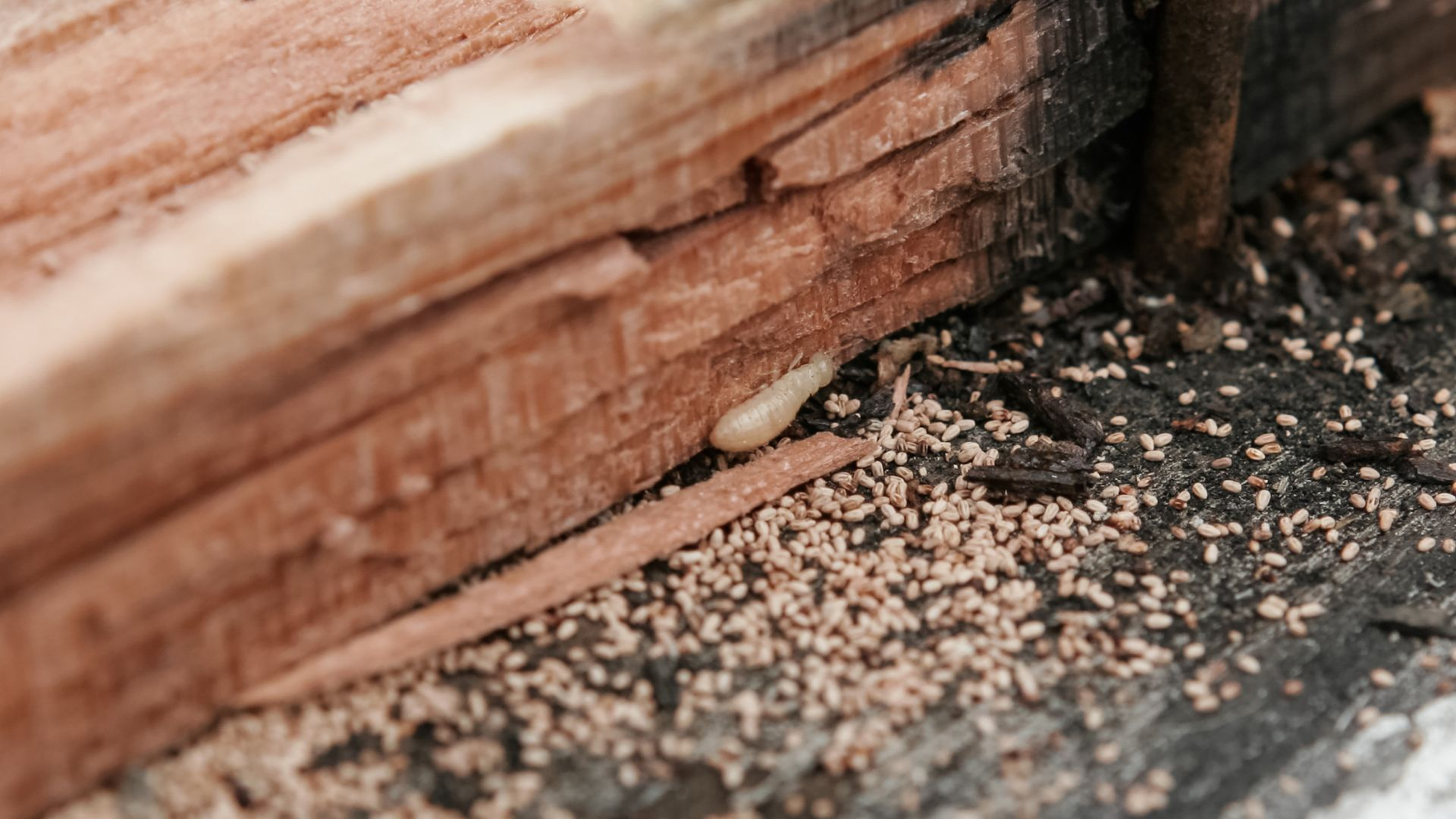
Termite damaging woodwork.
Signs Of A Termite Infestation To Look For
Termites can be more difficult to spot than simply seeing a few crawling pests around your home. Termites are infamous for being good at hiding and difficult to find in your home.
We have compiled a list of tell-tale signs that your home is dealing with a termite infestation. Be sure to investigate or contact a professional pest control company if you notice any of these signs of termite activity.
Discarded Wings - Every year, termites will engage in swarming activity. During these swarming events, they all shed their wings and leave behind large amounts of these discarded wings.
Paint peeling - As termites tunnel through wooden structures like walls, they allow moisture into the walls. This moisture may cause peeling paint and paint bubbles.
Mud tubes - These are very distinguishable little tunnels that termites make along walls. They are typically about as wide as a pencil and are composed of soil and wood.
Frass - Tiny pellets of chewed-up woodwork are what’s known as frass. This termite excrement is a sign of a colony nearby in your home.
Wood that sounds hollow - When you tap on wood throughout your home, and it has a hollow ring to it, there’s a good chance it IS hollow! Termites eat up the inside of your home’s wooden structures, giving it a hollow sound when tapped.
Types of Termite Killers
There are two primary categories when it comes to termite killers - bait or liquid treatment. Liquid termiticides can be applied directly to woodwork or as a barrier around the perimeter of your home.
1. Termite Bait
Baits work by poisoning the termites and their colony. By placing poison-filled traps along the perimeter of your home, you can attract termites and let them feed on bait.
Termites are highly attracted to the cellulose, wood, or paper contained in these bait devices. Eventually, when worker ants find and consume the poison, foraging termites will carry it back to their colony, ultimately spreading and killing the entire nest.
2. Liquid Termiticides
Direct treatments and liquid barriers:
-
Direct liquid treatments
Sometimes also known as “spot treatments,” direct liquid treatments involve drilling holes into your home’s wooden structures and injecting a foam treatment directly inside
Alternatively, foam or spray treatments can be applied to cracks and crevices in and around the home, depending on the insecticide involved.
-
Liquid barriers
These are applied by first digging a trench around the outside of your home. Once you’ve dug the trench, apply the liquid termite treatment to it.
The great thing about this method is that the insecticide is non-repellent, meaning it won’t scare away termites. Foraging termites won’t notice as they walk across the poison and bring it back to their colony.
Choosing a Termite Killer: Top Points to Think About
Any termite infestation, even small, is a serious issue. However, how you go about dealing with the problem may vary depending on your home’s individual termite situation. We encourage you to examine these different points before deciding on a termite killer that best suits your home’s needs.
Type - liquid, foam, bait, etc
Severity of infestation
How easy the product is to use
Budget
Length of treatment required
Kills multiple pests or termites only
Time the solution remains effective
Effects on surrounding plants or vegetable garden
Harshness of the chemicals involved
Outdoor or indoor use
Active Ingredients In Common Termiticides
While all termite killers have active ingredients lethal to termites, the chemicals and effects vary between products. We’ll explain a little about each below.
Bifenthrin - Derived naturally from chrysanthemum flowers, this pyrethroid-based termite treatment stops termites' nerves from functioning properly, eventually causing them to die.
Disodium Octaborate Tetrahydrate - A borate compound that kills wood-destroying insects by disrupting the digestive and enzyme production systems of termites.
Chlorfenapyr - This broad-spectrum insecticide works by interfering with the energy production in the cells of insects, causing them to die within 72 hours.
Novaluron - This termiticide is what’s known as a chitin inhibitor. It controls the molting and egg development processes, eventually eliminating the entire termite colony.
Fipronil - This insecticide powder disrupts insects’ central nervous system and causes them to lose control of their main body functions.
DIY Termite Killers vs. Pest Control Services
With pests as serious as termites, it’s hard to know when to try and tackle the issue on your own or to call local pest control professionals.
Because termites are such a danger to the structure of homes as well as the cause of expensive repairs, many people often recommend hiring a professional exterminator.
There are some cases where you may not need to spend the extra money to hire such a company. Upon your initial inspection, if you uncover thorough damage or spot many termites, it’s best to call a trusted, local termite professional immediately.
However, if you’ve thoroughly inspected your home and have found minimal signs of termites, you can likely tackle termite infestations on your own with some of the effective treatments we’ve described here in this article.
With a combination of perimeter treatment, baits, and direct sprays or foams, you can control termites on your own and prevent them from coming back.
Termite Killer FAQ
What is the best termite killer?
The best termite killer will depend on whether you are looking for something to use inside or outside, something that starts working quickly, or something that better fits your budget.
We’ve listed our top six, so we are confident there is a solution that perfectly fits your home’s termite situation.
What do termite exterminators use to kill termites?
In severe cases, the most effective option may be to hire a professional to eliminate termites in your home. Professional pest control companies often use a combination of termiticide baits, direct sprays, and liquid barriers.
Can I spray termites on my own?
Yes, you can spray termites on your own! After digging a trench to spray liquid barrier insecticide, you can follow up by treating cracks and crevices in woodwork with foam or spray.
What type of treatment is the most effective?
Ultimately, the most effective treatment is a termite killer that suits your infestation.
Do you see termites around the perimeter of your home? A trench spray may work best.
Do you have termites eating untreated wood? A product like Bora-Care may work best.




